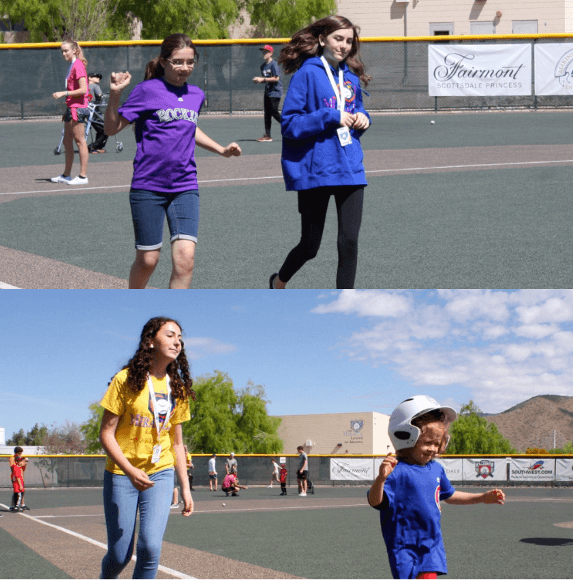by Katherine Johnson, M.S., BCBA
Senior Director of Partnerships, LEARN Behavioral
Families everywhere are chucking backpacks and school shoes to the back of the closet and getting ready for some fun in the sun. While other members of the family enjoy themselves during the quintessential summer activities, sensory-sensitive kids may feel overwhelmed and uncomfortable. How can you anticipate problems and find solutions ahead of time, so your entire family can make the most of the summer?

Planning and Preparation
Last-minute plans, like any schedule changes, can be disruptive to children with sensory processing disorders and issues, so planning is key. As you map out your summer, think about the types of activities everyone will enjoy and how you can make those with potential sensory triggers comfortable for your child.
Start by looking for sensory friendly events on your local events calendar. Many communities host special events or days for sensory-sensitive kids, such as performances at theaters without spotlights, blaring music, and crowds, or trips to shopping malls without the usual mob of consumers.
Other ways to plan and prepare in advance include:
- Calling facilities ahead of time to find out what days and times are less crowded
- Doing a sensory analysis of stimuli your child might encounter on an outing to pinpoint potential triggers (noise, crowds, smells)
- Helping your child “practice” the sensory experience in advance (e.g., applying sunscreen to a small part of the body and increasing the amount daily until your child gets used to head-to-toe coverage)
- Arranging an “out” for your sensory-sensitive child (e.g., creating a Plan B for your overstimulated child, in case Plan A doesn’t work)
Clothing
Clothing and sensory issues go far beyond tag removal. Summer clothing can make or break an outing. The wrong clothes can be a source of irritation, but the right ones can offer protection from other sensations your child may not like.
If your child takes time to get used to wearing shorts and short-sleeved shirts, buy some long sleeves and pants in light, natural, breathable fabrics to ease the transition. Likewise, keep in mind these tips about swimsuits, which can cause all kinds of sensory-related problems:
- Tight straps, elastic waists, tags, and ruffles can make swimsuits itchy and uncomfortable. Have your child try a variety of styles to discover the best fit.
- Consider shorts-style suits for girls, which can avoid sand inside the suit from sitting.
- Getting used to a wet suit can take time. Help your child grow accustomed to it by taking baths or showers in the suit ahead of your day at the pool, lake, or beach.
And don’t forget about shoes. The right shoes can help your child avoid the sensory discomfort of walking on sand, grass, and rocks. In addition, flip-flops can irritate some kids’ toes. For an alternative, look into plastic clogs, slides, or different types of water shoes.

Sun
When spending time in the sun, make sure your child drinks enough water and takes some shade breaks, while watching out for signs of overheating. Also realize that sunglasses are a must for light-sensitive kids. In fact, if your budget permits, buy multiple cheap pairs at the beginning of the summer, so your child never goes without.
When it comes to sunscreen, know that it is essential but, just like bug spray, can be greasy, sticky, creamy. What can help?
- Try out different types of sunscreen and bug spray to find what’s most acceptable to your child, including sprays, wipes, and unscented versions.
- Consider using a color-fading sunscreen, too, which fades in color as the lotion is absorbed—and disappears when your child is protected from and ready for the sun.
- If your child finds pressure relaxing, use the application of sunscreen as an opportunity for a massage.
- When bug spray is necessary, find a combination bug-spray/sunscreen so only one application is necessary. Alternatively, you can apply bug spray to their clothing before they put it on.

Water Fun – Beaches and Pools
Most children love to get in the water. Some of the sensory experiences that go along with it, like sand and chlorine, are less welcome. Protect your child’s beach towel from sand by placing it in the center of a fitted bedsheet with weights on each corner. Also apply sunscreen before getting to the beach to avoid sticky sand that won’t come off. To remove sand from skin quickly, rub a little baby powder on the area.
Chlorine in pools can be another problem for kids with sensory sensitivities. Nose plugs and goggles that cover the nose can help with the smell. If your child has chlorine-sensitive skin, consider a salt-water pool—or, if possible, stick to lake and ocean excursions. And, of course, remember to take extra precautions to help your child stay safe around water and while swimming.

Parties, Parades, and Car Trips
If parties, parades, and car trips are on your agenda this summer, you’ll want to plan ahead as much as possible to deal with the stimulation. Noise-cancelling headphones can be a life-saver not only in the car but also at parades, fireworks displays, and in many other situations. If your child gets carsick, avoid the rear seats of busses and backward-facing seats, and keep ginger candy on hand (real ginger, not ginger-flavored) to ease nausea.
With summer, of course, comes pesky bugs like mosquitoes and gnats. Carry along an anti-itch stick or cream, in addition to band-aids to cover bites. No one likes to feel itchy, and for sensory-sensitive kids, itchiness and the urge to scratch can feel even worse.
Having an overresponsive sensory system does not mean that summer activities must be missed. With a thoughtful plan that includes carefully-selected activities and the right supports, your entire family can get some rest and relaxation—and enjoy a delightful summer and school break.
For more tips on making the most of summer, read “Transitioning to Summer: 5 Tips to Make It a Success.” And if you’re looking for an autism provider with the ability to tailor treatment to the unique needs of your child, reach out to us at 1.877.576.4824, or fill out and submit our form.






